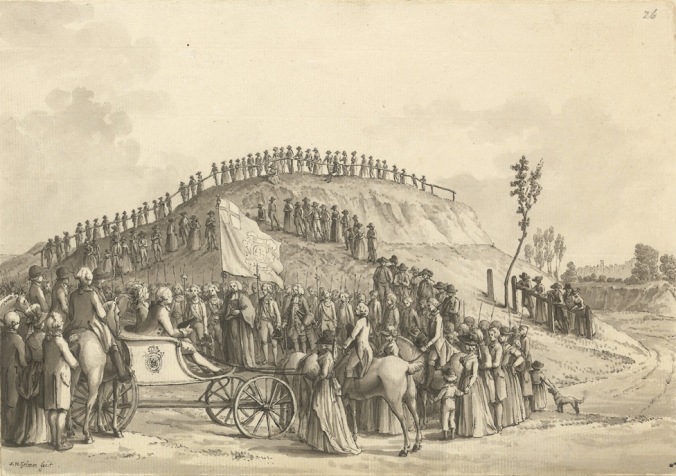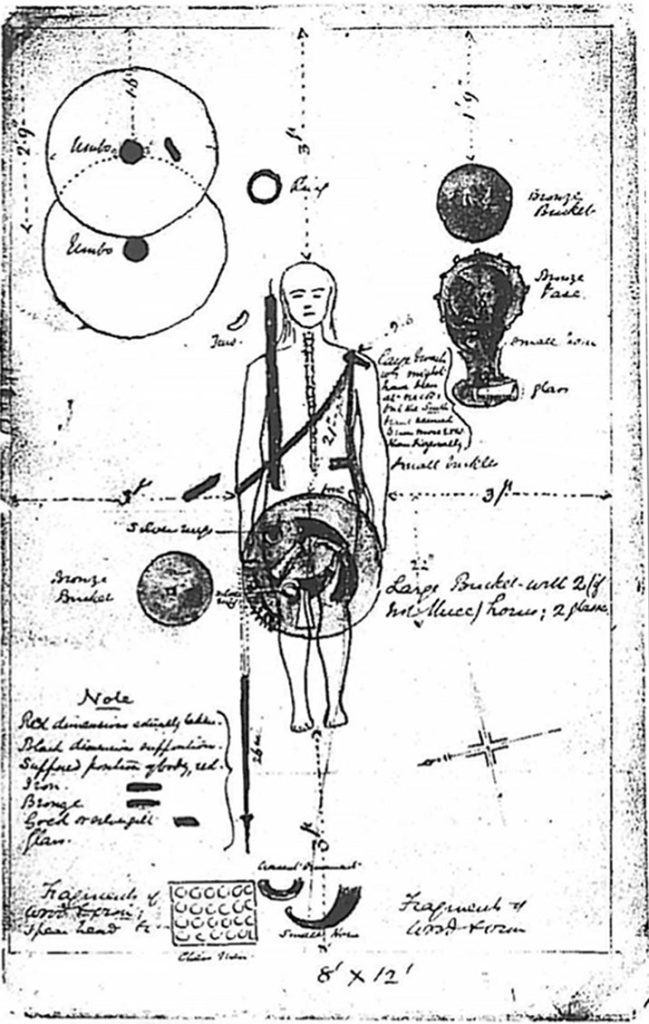Over the years people haven’t always been kind to Slough, Berkshire. In spite of the fact that the town has the second most productive economy in the UK, is the setting for one of the most successful British comedy series of recent years, and is a major transport hub, all too-often people judge the book by the cover and underestimate Slough… Montem Mound, in the Salt Hill area of Slough, is a prime example of how a fascinating story can be hidden beneath an underwhelming exterior – recent work carried out by the Round Mounds Project has shown that Montem Mound is far older than most had imagined, and is in fact part of the story of the earliest development of the social and political structures still in place in England to this day.
“Perhaps to this list of … landmarks in the early development of the political structures of England, we can now add Montem Mound, in Slough…”

Montem Mound, Slough as it appears today. Nigel Cox [CC BY-SA 2.0 (http://creativecommons.org/licenses/by-sa/2.0)%5D, via Wikimedia Commons

King George III and Queen Charlotte at the “Montem”, 1778 (ink wash on paper), by Samuel H. Grimm via the British Library online gallery
Montem Mound was examined by the Round Mounds Project during the 2016 field season. Two core samples were extracted from the mound in order to examine the makeup of the monument, and to extract material suitable for radiocarbon dating. The mound was found to consist of a 3.5m high artificial heap of sand and gravel. Charred plant remains extracted from near the buried former ground surface and from midway in the mound makeup indicate that the mound was constructed some time after the mid-5th century, probably in the 6th or 7th century AD. This places the origin of Montem mound firmly in the early part of the Anglo-Saxon period
Although its discovery is a surprise, the newly-discovered Anglo-Saxon monument at Montem Mound, Salt Hill, is not entirely without parallels – in the old churchyard at Taplow, just 3½ miles (5.7km) northwest from Montem is another very similar monument, also known to date to the early Anglo-Saxon period. Given their similarity in form, date and landscape situation, it is likely that, like Taplow, Montem Mound started out as the burial mound of an important local figure.

Taeppa’s Mound in the old churchyard, Taplow cc-by-sa/2.0 –  Stefan Czapski – geograph.org.uk/p/3814805
Stefan Czapski – geograph.org.uk/p/3814805
Taeppa’s Mound (which, incidentally, gives Taplow it’s name), was excavated in 1883 by a local collector of antiquities, James Rutland. The contents of the barrow, now kept at the British Museum and shown in the sketch below, were for a long time the richest collection of Anglo-Saxon grave goods found anywhere in the country. Up until the incredible discoveries at Sutton Hoo in 1939, the Taplow burial was the only real-life example of the fabulous wealth described in Beowulf (see below). Now, almost a century later, we know of a few more of these so-called “Princely Burials”. These burial mounds, the resting places of high-status individuals and local leaders dating to the 6th and 7th centuries AD, give us a fascinating glimpse into the traditions of a society in the midst of major political and cultural change: after the decline of Roman Britain, on the cusp of the re-adoption of Christianity and the development of new political structures which would, in time, lead to the formation of powerful kingdoms, and, ultimately, the emergence of a unified England. Perhaps to this list of important monuments, landmarks in the early development of the political structures of England, we can now add Montem Mound, in Slough…

Reproduction of sketch of the 1883 Taplow burial.
geworhton ðá Wedra léode
hlaéo on hóe sé wæs héah ond brád
waéglíðendum wíde gesýne
ond betimbredon on týn dagum
beadurófes bécn· bronda láfe
wealle beworhton swá hyt weorðlícost
foresnotre men findan mihton·
hí on beorg dydon bég ond siglu
eall swylce hyrsta swylce on horde aér
níðhédige men genumen hæfdon·
forléton eorla gestréon eorðan healdan
then wrought the Wederas’ people
a barrow on the hill, it was high and broad,
for wave-farers widely visible,
and they constructed in ten days
the war-chief’s beacon, the leavings of the fire,
with a wall they encircled, as it most worthily
the very wisest men could devise;
they placed in the barrow rings and brooches,
all such trappings, as before from the hoard
hostile men had taken away;
the treasure of heroes they let the earth hold
[Beowulf – lines 3156-3166, translation by Benjamin Slade]
Reblogged this on an (almost) anglo-saxonist and commented:
New and exciting discoveries in Slough… another piece to the Anglo-Saxon puzzle!
LikeLike
If this mound is truly a brother to Taplow mound (unlikely), then there should be a burial chamber below ground level under the mound. Should this possibility be explored
LikeLike
Yes, that would be a possibility given the date of the mound, and certainly that might be a task for future research projects… Perhaps geophysical survey might provide some answers. However, given that the site is a Scheduled Monument, the site is legally protected, and any further work would need official approval.
LikeLiked by 1 person
Once approval is given for archaeological work to be done at Salt Hill, I would certainly volunteer. This would help considerably with my research for my forthcoming book on Taplow
LikeLike
I have heard that this historical mound is no more, having been destroyed by building an ice rink. Is this true? If so, it is a breathtaking act of vandalism which needs investigating.
LikeLike
It is true that an Ice rink is nearby, but that was built many years ago, long before the recent excavations
LikeLike
it’s wthin walking distance and I can assure it, it is very much STILL there, take a look on google street view – Montem Lane junction with Bath Road, slough is a good starting point…
LikeLike